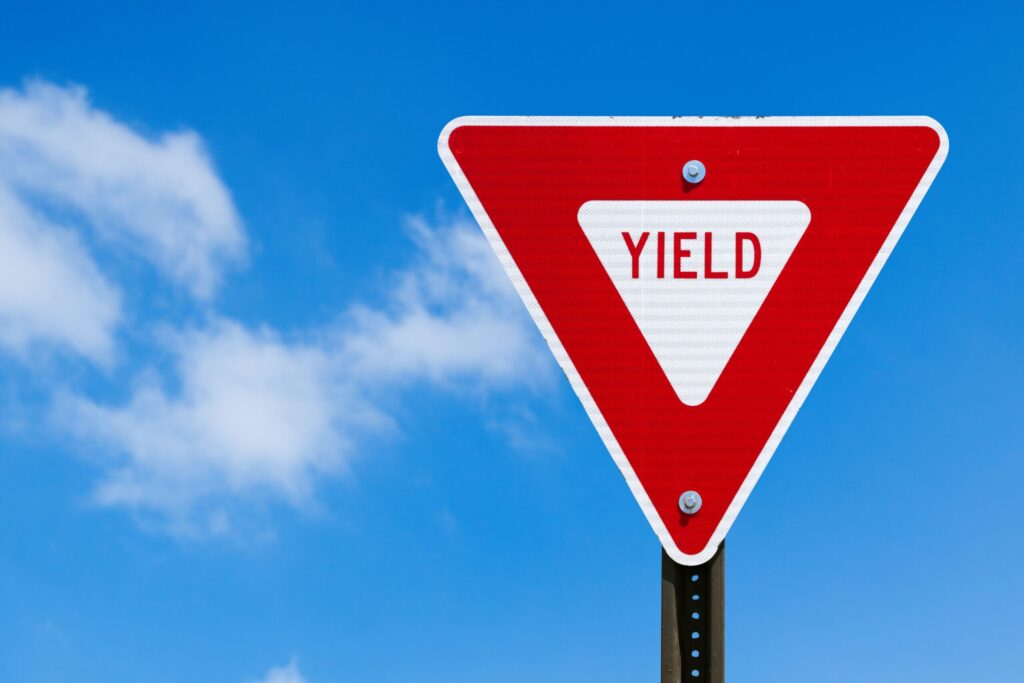The principle of yielding the right of way is fundamental to the smooth flow of traffic on the road and ensures the safety and efficiency of vehicles.
This concept is deeply embedded in the traffic laws and represents drivers’ collective responsibility to prioritise safety and avoid accidents.
What is right-of-way?
It is important to understand and adhere to all rules regarding the yielding right of way. This is not only a legal requirement but also a part of being a responsible driver.
In essence, giving up the right of way is an act of respecting the hierarchy established for traffic on roads. The traffic rules specify specific circumstances in which one driver is required to yield the right-of-way. This creates a framework for minimizing conflicts and collisions. In the worst-case scenario, failure to yield can cause confusion, traffic congestion and accidents, which could lead to injuries or death. Understanding and adhering to these rules are not only a legal requirement but also an important component in fostering a safe and harmonious environment.
At intersections, yielding the right of way is one of the more common situations. At intersections, the roads of two or more vehicles cross. Conflicts can occur if there’s no protocol for who goes first. Traffic signals and signs are crucial in directing drivers to the correct right of way at intersections. They tell them when they should stop, go forward, or yield. Following these signs ensures that traffic flows smoothly and predictably, minimising the chance of accidents and improving overall safety.
In situations where pedestrians are involved, it is especially important to yield the right of way. At pedestrian crossings and crosswalks, pedestrians get the right of way. In these areas, drivers are expected to give pedestrians the right of way to allow them to cross safely. In addition to violating traffic laws, failure to yield to pedestrians poses significant risks to vulnerable road users. It is important to respect and acknowledge the pedestrian right of way in order to create pedestrian-friendly areas and reduce the risk of accidents involving pedestrians.

Understanding the merging dynamics is another important aspect of yielding the right of way. Drivers must give way to vehicles on the road when merging into a freeway or switching lanes. The principle of yielding to vehicles already on the main road prevents sudden lane changes and reduces traffic congestion. It also ensures that all vehicles have a smoother transition. Failure to yield can cause traffic disruptions, accidents and chain reactions.
In situations where emergency vehicles approach, yielding becomes even more important. Other drivers must yield to emergency vehicles such as fire trucks or ambulances when they activate their lights and sirens. It is important to clear the way for emergency vehicles. This is more than just following regulations. In such cases, drivers who yield quickly contribute to an efficient emergency service and ultimately the safety of those in urgent need.
Yielding is not limited to formal signals or signs. It also applies in situations with uncontrolled intersections and where there are no instructions. Drivers are required to be cautious, to assess traffic conditions, and to yield when needed. Drivers must be able to make informed decisions and adapt to the current circumstances. This emphasizes the need for situational awareness and to be able to handle complex traffic situations responsibly.
It is important to remember that yielding right of way is more than just following the rules. It is an act of mutual respect and cooperation between drivers. The cooperative spirit is extended to situations such as merging with other vehicles in traffic jams, giving pedestrians access, and allowing cyclists to pass. This is why yielding does not only represent a legal requirement but also a commitment by all road users to create a culture of safety and courtesy.
Not yielding to the right of way can have severe consequences, ranging from minor accidents to major catastrophes. In addition to causing physical damage, these incidents can cause serious injuries and disrupt traffic, as well as incur substantial social and economic costs. The practice of yielding, therefore, is more than a simple set of rules. It’s a vital part of driving responsibly that impacts the safety of drivers and passengers.
Conclusion:
The principle of yielding right-of-way is fundamental to the interaction between emergency vehicles and pedestrians on the road. This concept is multifaceted and encompasses legal requirements, traffic rules, as well as the principles of cooperation and courtesy. It is important to follow the rules regarding the yielding right of way. This not only demonstrates responsible driving but also courtesy and cooperation. Understanding and respecting the right of way in different traffic situations will help to create a safer, more efficient and more harmonious road environment.
